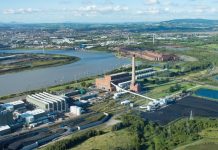The Oxford-Cambridge arc has the potential to create up to 1.1 million new jobs by 2050 if the required new infrastructure is delivered, according to new research from Savills. An additional 9.6 million sq ft (891,869 sq m) of office and R&D floorspace, plus the delivery of 69 million sq ft (6.410 million sq m) of warehouse accommodation will be needed to facilitate this growth.
Geographically the arc covers more than 26 district and unitary authorities and 5 Local Enterprise Partnerships and includes towns and cities such as Milton Keynes, Northampton, Bedford, Luton, Aylesbury, Oxford and Cambridge.
At present, Oxford and Cambridge remain the driving force, however new infrastructure is likely to draw significant investment to both Bedford and Milton Keynes alleviating pressure on the two historic ends of the arc. Already home to several clusters of world leading industries, there is significant potential to realise further synergies by enhancing the connectivity of the region.
This growth is likely to be driven by sectors that have attracted considerable investment in the past five years, most notably pharmaceutical, cybersecurity, automotive and biotechnology. Savills notes, that whilst Oxford and Cambridge continue to attract the largest share of private equity and venture capital investment, the delivery of floorspace in locations such as Bedford and Milton Keynes means there should be a wider distribution in the future.
In particular, there will be a new focus for innovation and growth in Milton Keynes, which will be supported by the creation of a new university due to open in 2023. This will see 5,000 students focusing on science, technology and engineering. Joining the 10 existing universities within the arc, greater connectivity will encourage more collaboration between the institutions strengthening the clusters ability to commercialise ideas.
Encouragingly, Savills research shows that in 2019 the region has already received significant levels of funding, rising from £10.2 billion in 2018 to £27.4 billion, a 170% increase to the end of Q3 2019. In terms of venture capital, this has risen from £861 million in 2018 to £1,076 million in the same time period, a 25% growth rate despite high levels of political uncertainty in the UK.
Steve Lang, director in the Savills research team, comments: “An increase in overall investment into the tech and life science sectors within the arc is a strong indication of potential future real estate requirements. What’s clear is that there is a need for choice in terms of scale, price points and location when it comes to commercial space in order to facilitate this growth within the region and to ensure the UK remains attractive to global businesses.”
Ultimately, the success of the arc will be determined by the growth of competing locations across the globe. Savills believes it is key to deliver the most appropriate office and R&D space within specific sectors to retain and expand them within the arc.
A review of the Global Innovation Index 2019, compiled by Cornell University, INSEAD and the World Intellectual Property Organisation (WIPO), shows the relative strengths of 129 economies of all scales. The best science and technology clusters, determined by using scientific publications and patent filings under WIPO and data from the Patent Co-operation Treaty (PCT) place Oxford and Cambridge at 71st and 58th respectively. Savills notes that neither city has moved up the rankings in recent years due to regional constraints, whereas almost all Chinese clusters have continued to grow.
Steve Lang adds: “It is clear for the life science cluster in the arc region to compete internationally there needs to be greater collaboration between major centres. From an affordability perspective, prime office rents in Cambridge and Oxford are considerably lower than its American counterparts in Boston for instance. Therefore, there needs to be a conscious decision from developers and investors to price office and laboratory space appropriately if the cluster is to continue to expand and thrive whilst allowing for sensible rental growth.”






















